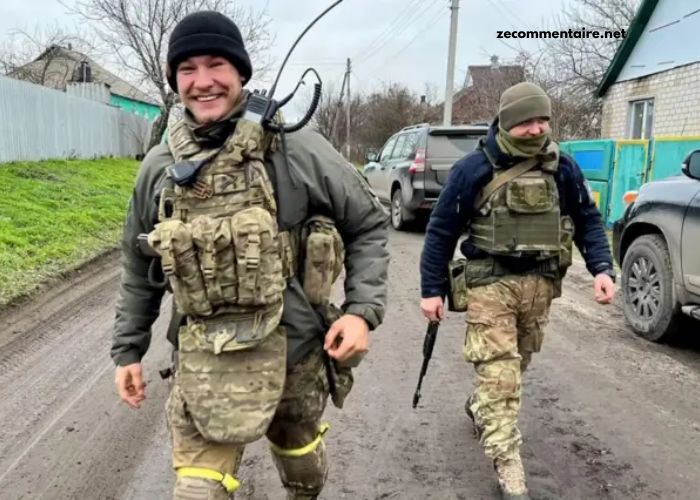The Guerre en Ukraine has been one of the most significant and tragic events of the 21st century. The war, which began in 2014 and escalated dramatically in February 2022, has not only caused untold human suffering but also reshaped international relations.
This conflict involves Ukraine and the Russian Federation, with a host of international actors playing various roles in diplomacy, sanctions, and military involvement. Understanding the causes, evolution, and consequences of Guerre en Ukraine is crucial for anyone wanting to grasp the full impact of this ongoing crisis.
This article aims to explore the underlying causes of the Guerre en Ukraine, how the conflict has evolved over time, and the far-reaching implications for global politics and security. Additionally, we will look into the humanitarian crisis, the role of international organizations, and how the war has affected both the region and the world. Let’s delve into the ongoing tragedy that is Guerre en Ukraine and attempt to understand its complex dimensions.
What Are the Origins of Guerre en Ukraine?
The roots of Guerre en Ukraine can be traced back to centuries of historical tensions between Russia and Ukraine, but the modern conflict began with Ukraine’s desire to break free from Russian influence and align more closely with the West.
In 2014, the conflict began with Russia’s annexation of Crimea, a move that was widely condemned by the international community and led to economic sanctions against Russia. The annexation was a direct violation of international law and marked a significant escalation in tensions between Russia and Ukraine.
At the heart of Guerre en Ukraine lies the question of sovereignty and territorial integrity. Russia viewed Ukraine’s growing ties with Western institutions like the European Union and NATO as a direct threat to its sphere of influence.
Meanwhile, many Ukrainians saw this as an opportunity to move towards a more democratic and prosperous future, free from Russian interference. The subsequent conflict in Eastern Ukraine, particularly in the Donbas region, has been a brutal reminder of the deep divisions within the country and its ongoing struggle for independence.
How Did the Conflict Escalate in 2022?
While Guerre en Ukraine had been simmering for several years, the escalation of the conflict in February 2022 marked a dramatic turning point. Russian President Vladimir Putin launched a full-scale invasion of Ukraine, with the intent of quickly toppling the Ukrainian government and installing a pro-Russian regime. This invasion caught the world by surprise, as many had hoped that diplomacy and economic pressures would prevent such an outbreak of large-scale violence.
The invasion marked the beginning of an all-out war, with Russian forces attacking from multiple directions. Cities across Ukraine, including Kyiv, Kharkiv, and Mariupol, were heavily bombed, leading to widespread destruction and a severe humanitarian crisis.
Despite initial Russian military advantages, the Ukrainian military, bolstered by civilian resistance and international support, put up a fierce fight, turning the tide of the conflict in some areas. The brutal nature of the invasion and the large-scale displacement of civilians have only deepened the divide between Russia and Ukraine, making a peaceful resolution to Guerre en Ukraine more difficult than ever.
What Is the Humanitarian Impact of Guerre en Ukraine?
The humanitarian consequences of Guerre en Ukraine have been devastating. Millions of civilians have been forced to flee their homes, with an estimated 13 million people displaced by the conflict, both internally within Ukraine and across international borders. The war has caused widespread destruction, with entire cities and towns being reduced to rubble, particularly in the eastern and southern parts of the country.
In addition to the displacement, Ukraine has faced significant challenges in providing food, water, and medical care to its citizens. Many areas have been left without access to essential services due to Russian bombings and attacks on infrastructure. The United Nations has repeatedly warned of the growing humanitarian crisis, with millions of Ukrainians facing extreme poverty, hunger, and the risk of disease.
The war has also led to a tremendous loss of life, with tens of thousands of soldiers and civilians killed or injured. The physical and psychological toll on the Ukrainian population has been immense, with countless people left traumatized by the violence and suffering they have witnessed. International humanitarian organizations have been working tirelessly to provide aid to the affected population, but the scale of the crisis remains overwhelming.
How Has the International Community Responded to Guerre en Ukraine?
The international response to Guerre en Ukraine has been swift and multifaceted, with many countries condemning Russia’s actions and offering support to Ukraine. The European Union, the United States, and several other nations have imposed strict sanctions on Russia in an attempt to weaken its economy and force a change in its policies. These sanctions have targeted Russian banks, businesses, and key individuals in Putin’s inner circle.
In addition to economic sanctions, countries around the world have provided Ukraine with military and non-military assistance. This includes financial aid, weapons, training for Ukrainian forces, and humanitarian aid for displaced civilians. NATO has also played a significant role in providing support, although it has avoided direct military involvement to prevent further escalation of the conflict.
International organizations, such as the United Nations, have been actively involved in trying to mediate peace talks and address the humanitarian crisis. However, diplomatic efforts have largely failed to bring an end to Guerre en Ukraine, as both sides remain deeply entrenched in their positions. The war has also caused a strain in international relations, as countries like China and India have largely remained neutral, while others have supported Ukraine unequivocally.
What Are the Long-Term Consequences of Guerre en Ukraine?
The long-term consequences of Guerre en Ukraine are difficult to predict, but there are several key outcomes that could shape the future of Europe and the world. The conflict has already had a profound impact on global energy markets, as Russia is a major supplier of oil and natural gas. European countries, particularly those that rely heavily on Russian energy, have been forced to find alternative sources, leading to an energy crisis that has affected millions of people.
In addition to energy concerns, the war has had significant effects on the global economy, with rising inflation, food shortages, and disrupted supply chains. The conflict has also exacerbated existing geopolitical tensions, especially between Russia and the West. NATO has been strengthened by the crisis, with Sweden and Finland applying for membership, signaling a shift in European security dynamics.
The most significant long-term impact, however, will be on Ukraine itself. The country has suffered unimaginable losses, and its recovery will require years of rebuilding and foreign aid. The war has also deepened divisions within Ukrainian society, and it remains to be seen how the country will reconcile its complex political and cultural landscape in the aftermath of the conflict.
Conclusion
In conclusion, Guerre en Ukraine has far-reaching consequences not only for Ukraine and Russia but also for the entire world. The conflict has caused immense human suffering, with millions displaced, thousands killed, and the country left in ruins. Despite international efforts to mediate peace, the war continues to rage on, with no clear end in sight.
The geopolitical, economic, and humanitarian ramifications of Guerre en Ukraine will continue to shape global politics for years to come. It is crucial for the international community to continue working towards a resolution, but for now, the war remains one of the most complex and devastating crises of our time.




